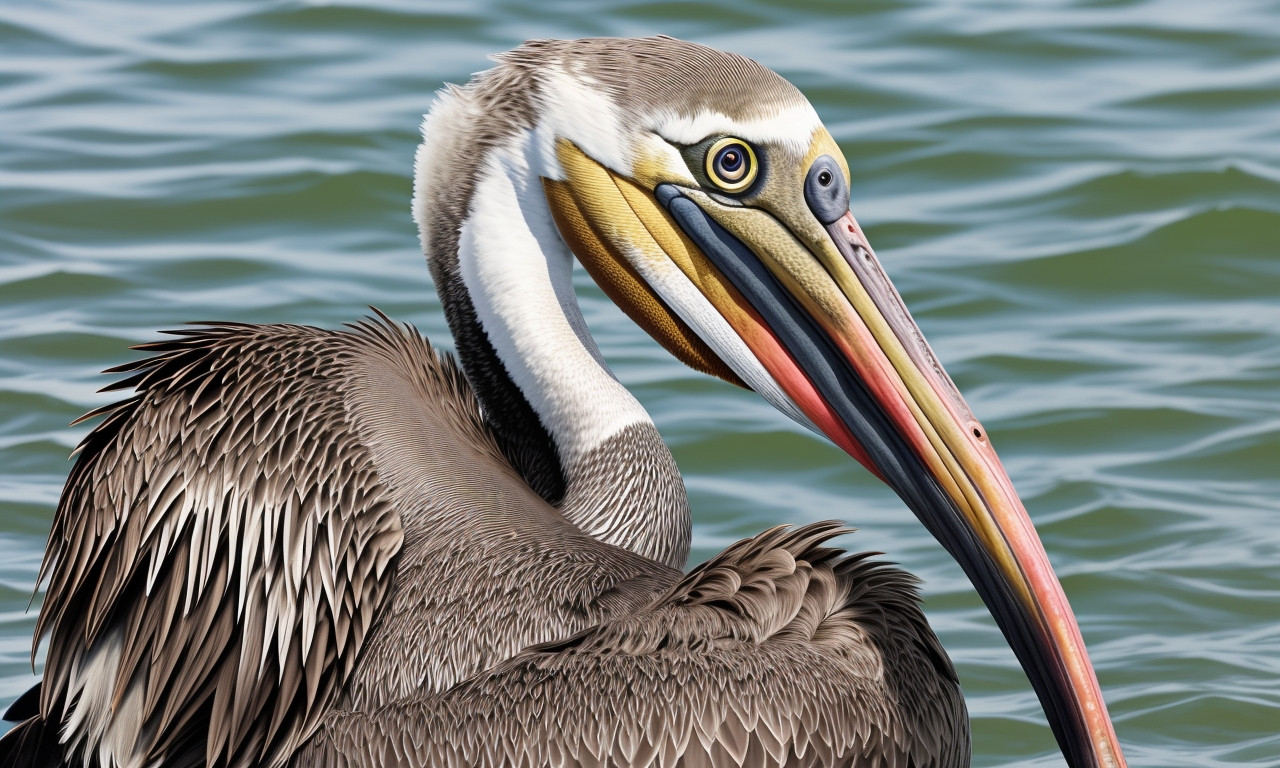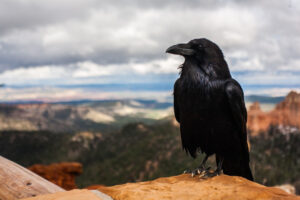Louisiana State Bird – Brown Pelican: A Rich History & Identification Guide
Dive into the captivating journey of the Louisiana State Bird – Brown Pelican: A Rich History & Identification Guide. Uncover the fascinating narrative of this iconic bird, from its storied past to its distinctive features that make it a beloved symbol of the Bayou State. Whether you’re a bird enthusiast, history buff, or just curious about the natural wonders of Louisiana, this comprehensive guide is your gateway to understanding the majestic Brown Pelican. Explore with us and discover why this extraordinary bird captures the hearts and imaginations of all who encounter it. Ready to soar into the world of the Brown Pelican? Keep reading to unveil the secrets and splendor of Louisiana’s feathered emblem.
Louisiana State Bird

The Louisiana State Bird, the Brown Pelican, holds a special place in the hearts of locals and naturalists alike. Celebrated for its grace and beauty, the Brown Pelican is easily recognizable by its large, pouched bill and striking plumage. Historically, these pelicans faced severe population declines due to pesticide usage in the mid-20th century. However, with dedicated conservation efforts, they have made a remarkable comeback, embodying resilience and renewal.
When identifying the Louisiana State Bird, look for its distinct features: a large, grayish body with a white head and neck, and a pale yellowish crown. During breeding season, its neck becomes a deep chestnut color. The Brown Pelican’s wingspan can reach up to 7.5 feet, making it an impressive sight as it soars gracefully over the waters.
This bird is a familiar icon along the Gulf Coast, often observed diving elegantly into the ocean to catch fish. It is also seen resting serenely on piers and coastal structures. Their social nature means they are usually found in flocks, adding to the coastal charm of Louisiana’s bayous and waterways. In recognizing the Brown Pelican as the Louisiana State Bird, one acknowledges a rich heritage of resilience and the beauty of coastal ecosystems.
Where can you find them?
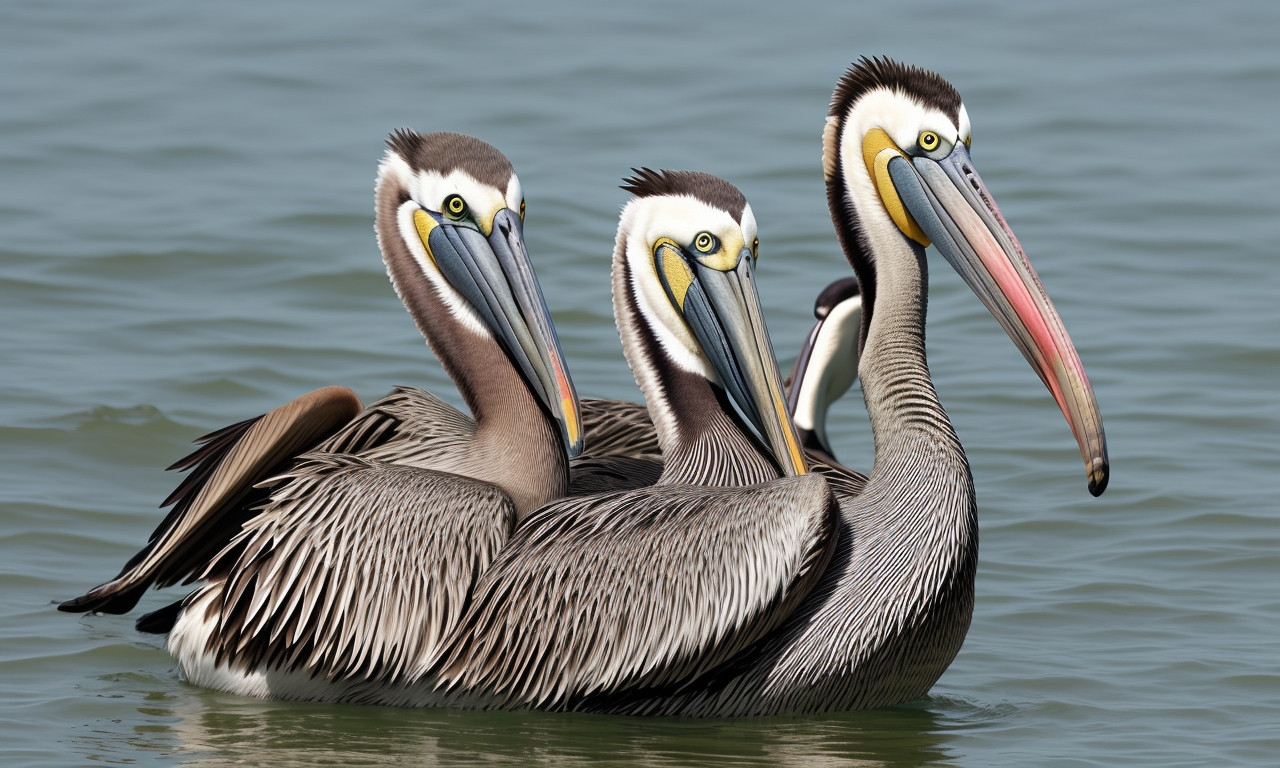
The Louisiana State Bird, the Brown Pelican, is a fascinating creature with a rich history and distinctive features that make it an iconic symbol of the state. These majestic birds are characterized by their large size, broad wingspan, and long, hooked bills which are ideal for their plunge-diving fishing technique. One may wonder, "Where can you find them?" The Brown Pelican often inhabits coastal areas, estuaries, and nearshore waters, making Louisiana’s Gulf Coast an ideal habitat. They can also be spotted perching on pilings, docks, and other man-made structures along the coastline.
Historically, the Brown Pelican has been both a symbol of natural beauty and environmental resilience. Once on the brink of extinction due to the use of pesticides like DDT, conservation efforts have helped their populations to rebound. Today, their presence is a testament to successful wildlife protection initiatives.
For bird enthusiasts and nature lovers, observing the Brown Pelican in its natural habitat offers a rewarding experience. Whether you’re boating, walking along the beach, or visiting one of Louisiana’s wildlife refuges, keep an eye out for these magnificent birds. Understanding their habitats and history enhances both the appreciation and conservation of the Brown Pelican in Louisiana.
Fun Facts about the Brown Pelican
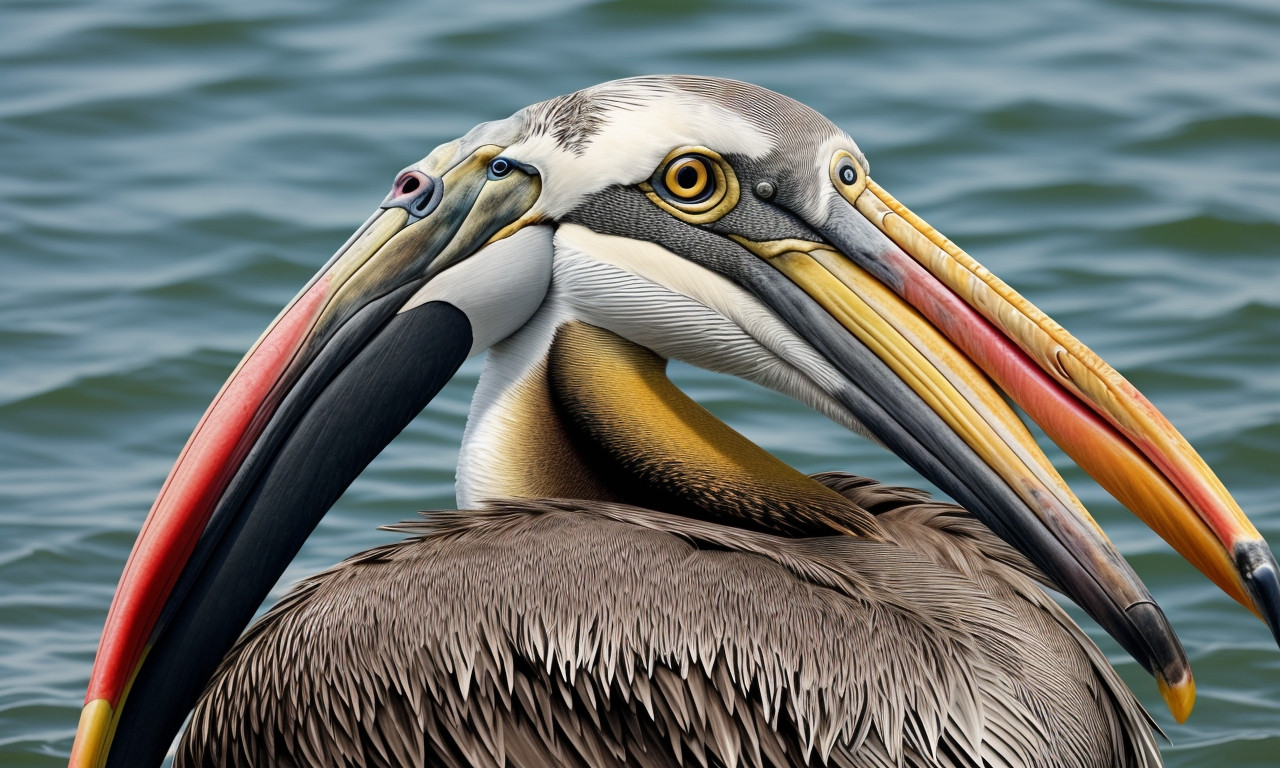
The Brown Pelican, Louisiana’s proud state bird, stands as a remarkable symbol of resilience and beauty. With a wingspan stretching up to 7 feet, this magnificent bird captures the essence of the state’s coastal charm. Fun facts about the Brown Pelican reveal its unique traits and significant history. Notably, the Brown Pelican experienced a brush with extinction during the mid-20th century due to pesticide pollution, particularly DDT. However, thanks to concerted conservation efforts, it has made a triumphant recovery, and today, these birds are a common sight along Louisiana’s coastlines.
Identifying the Brown Pelican is relatively straightforward. Its large, stocky body, long bill with an extendable pouch, and distinctive dark brown and white plumage set it apart. Juvenile pelicans are mostly brown with white underparts, while adults boast a striking white head with a yellowish wash, accompanied by a deep brownish-gray body.
Fun facts about the Brown Pelican also touch on its feeding techniques. Instead of wading like other pelican species, the Brown Pelican dives headfirst into the water to catch fish, a method that is as effective as it is spectacular to witness. With their fascinating history and distinctive characteristics, the Brown Pelican remains an enduring emblem of Louisiana’s natural heritage.
Identification
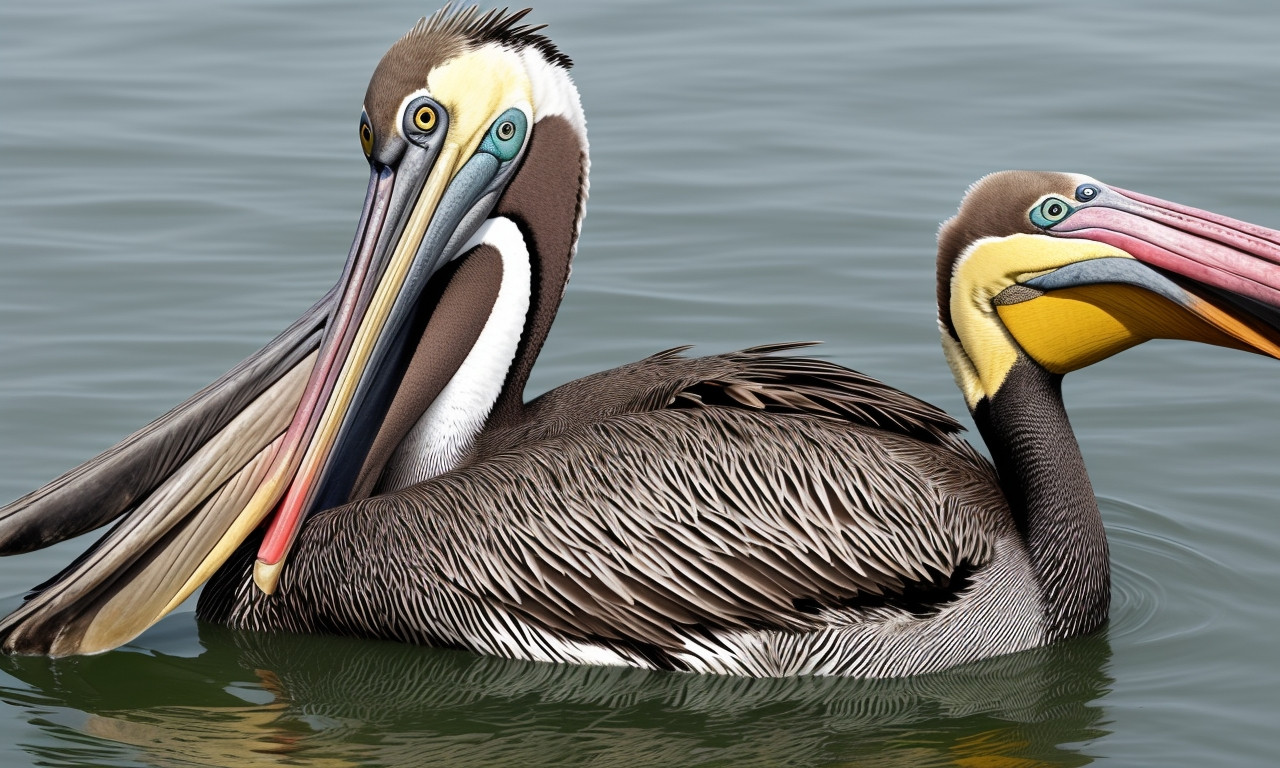
The Louisiana State Bird, the Brown Pelican, is an iconic and fascinating creature teeming with history and unique characteristics. Standing proudly as the state bird since 1966, this majestic bird symbolizes resilience and recovery after near extinction in the mid-20th century due to pesticide use. The identification of the Brown Pelican is straightforward, thanks to its distinct features and behavior.
Measuring 4 feet in length with an impressive wingspan of up to 7 feet, the Brown Pelican can easily be spotted gliding gracefully over Louisiana’s coastal waters. Its notable identification markers include a large bill with a throat pouch, a pale yellow head, and a brown and gray body. Juveniles display brownish-gray plumage that transforms as they mature. Besides their striking appearance, their feeding habits—plunging headfirst into water to capture fish—serve as a distinct identification behavior.
The Brown Pelican’s presence along Louisiana’s coastal regions and island sanctuaries has made it a beloved symbol of the state’s natural beauty. Their survival story and subsequent population recovery efforts echo the spirit of Louisiana itself—resilient and thriving. Learning more about their identification not only raises awareness but also fosters appreciation for this remarkable species that epitomizes the rich ecological tapestry of Louisiana.
What do Brown Pelicans eat?
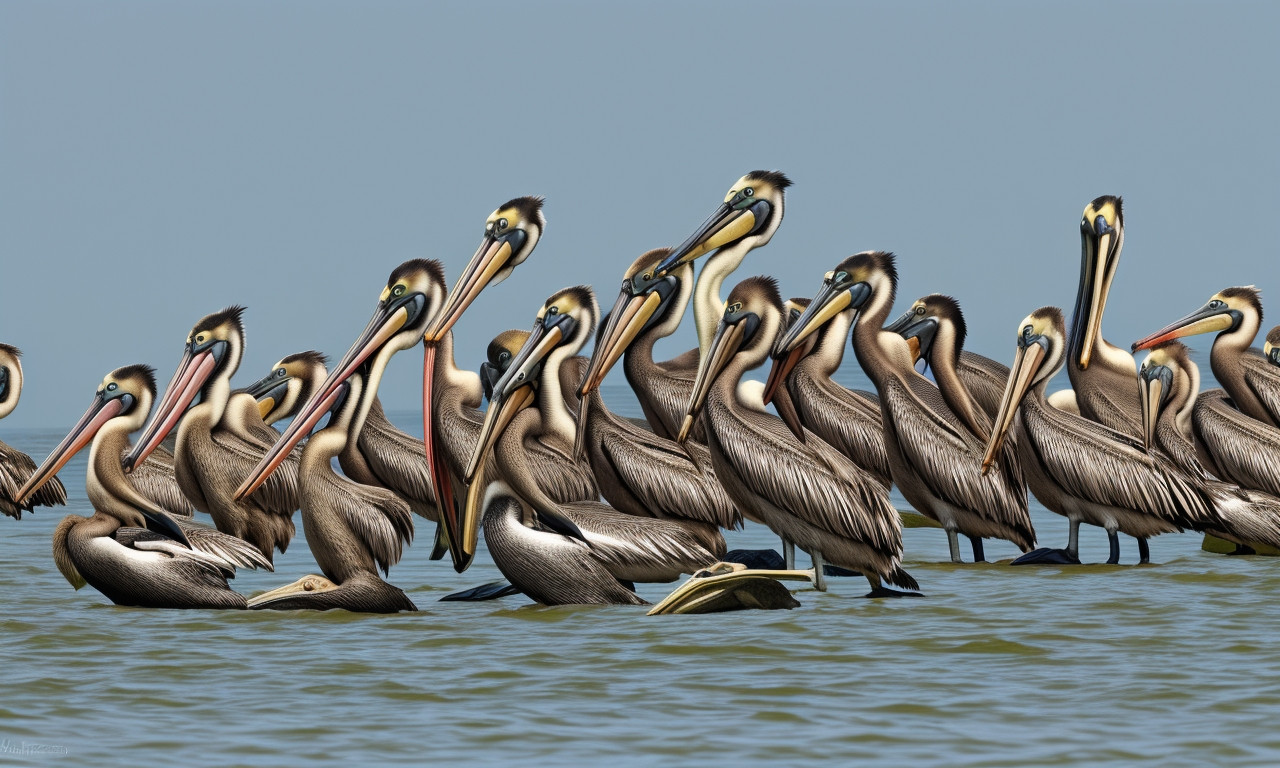
The Brown Pelican, Louisiana’s state bird, boasts a rich history tied to the coastal culture and an easily recognizable profile. Distinguished by its sizeable body, long bill with a distinct throat pouch, and striking plumage that varies from brown to white, the Brown Pelican is truly a marvel of the avian world. These majestic birds primarily inhabit shorelines and estuaries, making their homes in the warmer regions of the United States.
Understanding their dietary habits is essential in identifying where to find these birds. So, what do Brown Pelicans eat? Their diet predominantly consists of fish, which they skillfully catch by diving from heights, often seen plunging into the water with remarkable precision. They use their expansive throat pouch to scoop up fish and drain the water before swallowing their prey. Occasionally, they may supplement their diet with amphibians and crustaceans, but fish remains their primary nutrient source.
The Brown Pelican’s unique feeding technique and diet are not only fascinating but also critical for their survival in their natural habitat. These birds have developed an intricate relationship with their environment, showcasing the delicate balance necessary to sustain both their population and the ecosystem they inhabit. Observing these behaviors provides a deeper appreciation for Louisiana’s treasured state bird.
Vocalizations
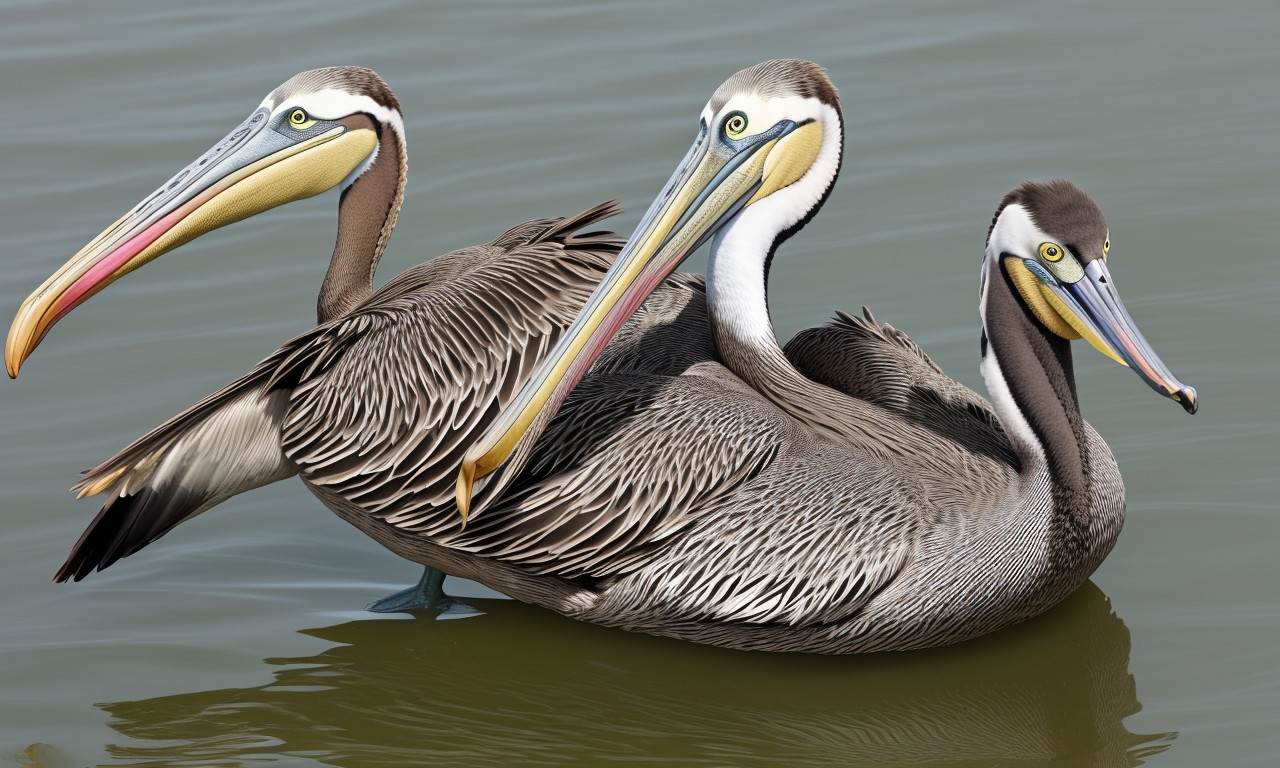
The Brown Pelican, Louisiana’s state bird, is a remarkable species with a rich history intricately tied to the coastal regions of the state. Known for their graceful flight and impressive fishing techniques, these birds have fascinated both locals and visitors alike. An often-overlooked aspect of the Brown Pelican’s behavior is its vocalizations. Unlike many other bird species, the Brown Pelican is relatively quiet, with their vocal repertoire primarily consisting of low grunts and guttural sounds during interactions with other pelicans, especially during the breeding season.
Adult Brown Pelicans are typically silent, but chicks are known to be more vocal, emitting high-pitched begging calls to attract the attention of their parents. These vocalizations are essential for survival, signaling hunger or distress. The relatively subdued nature of their calls contrasts with the more boisterous sounds of other coastal birds, making the Brown Pelican’s sounds unique markers of their presence.
Identifying the Brown Pelican involves observing their distinctive physical traits, such as their large bill and expandable throat pouch. However, paying attention to their subtle vocalizations can provide additional insight into their behavior and social interactions. Understanding these sounds enriches the ornithological knowledge about this iconic bird and deepens the appreciation for Louisiana’s cherished state bird.
Behavior
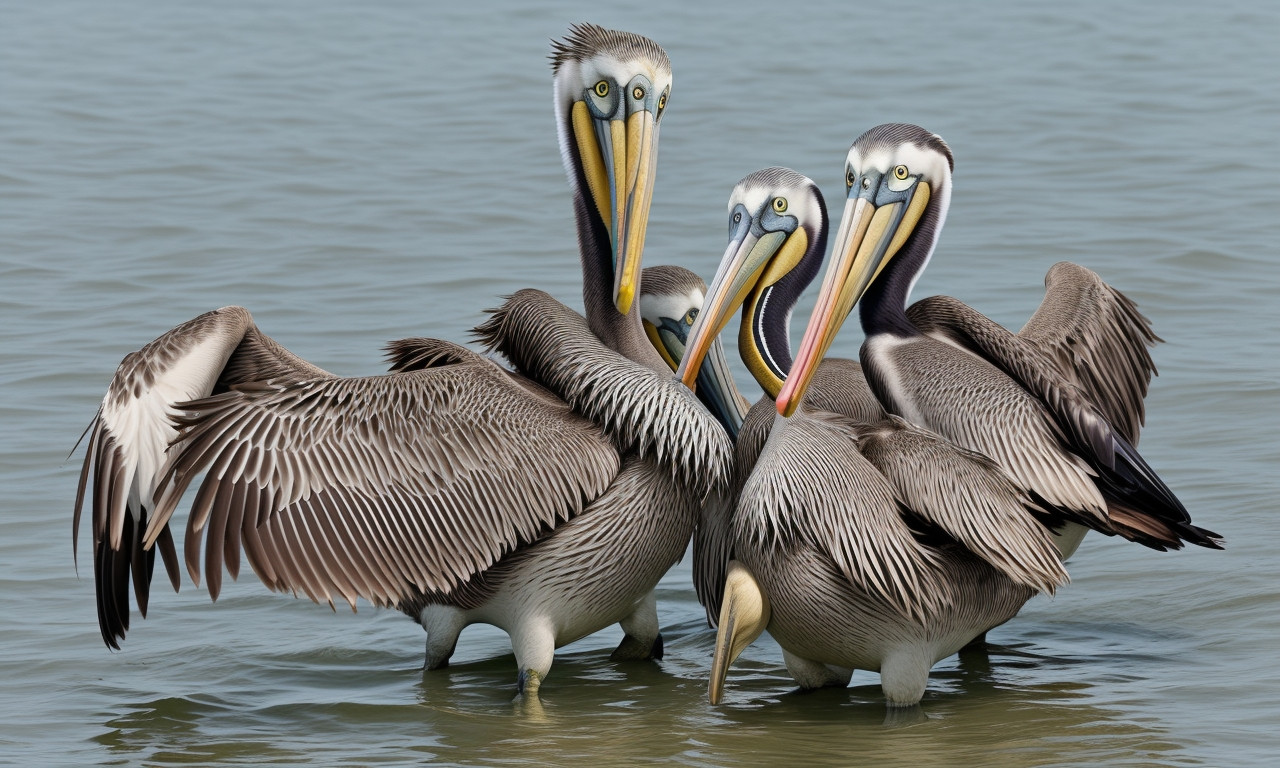
The Brown Pelican, Louisiana’s state bird, is a fascinating creature renowned for its rich history and distinctive behavior. This bird boasts an impressive wingspan of nearly 7 feet, gliding effortlessly above coastal waters and estuaries. Known for their grace in flight and striking appearance, Brown Pelicans are remarkable subjects for bird enthusiasts and researchers alike.
The behavior of the Brown Pelican is especially captivating. One of the most distinctive traits is their plunge-diving technique. Spotting fish from up to 60 feet in the air, they dive dramatically into the water to catch their prey. This behavior not only showcases their hunting prowess but also underscores their adaptation to coastal ecosystems. Social creatures by nature, Brown Pelicans often roost and nest in colonies, demonstrating intricate social behaviors and communication skills.
Furthermore, their history is one of resilience. Once threatened by pesticides like DDT, the Brown Pelican made a stunning recovery following conservation efforts. Observations of their behavior have been essential in understanding and protecting these magnificent birds. Their role as Louisiana’s state bird underscores their importance to the region’s natural heritage and serves as a reminder of the delicate balance within our ecosystems. Whether you’re a seasoned ornithologist or a curious observer, the behavior of the Brown Pelican offers endless fascination and insight into the natural world.
Other Birds in Louisana
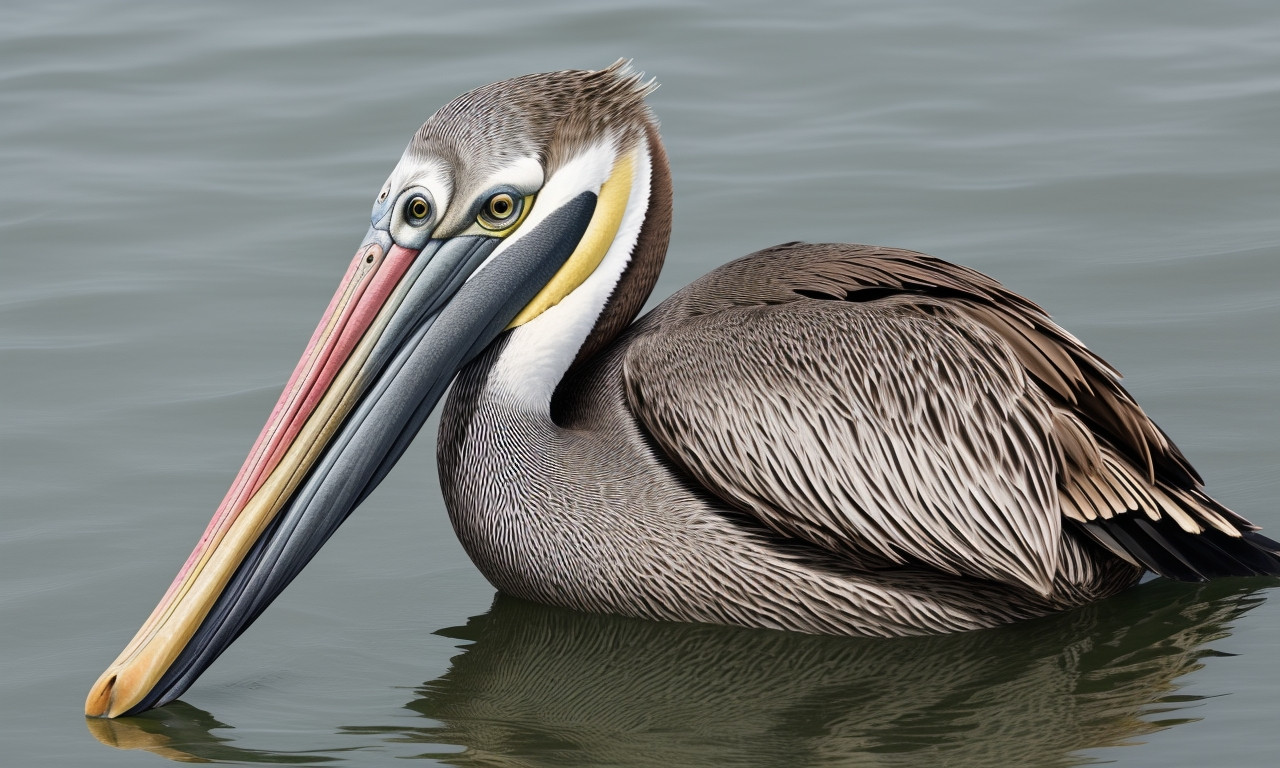
The Brown Pelican, designated as Louisiana’s state bird in 1966, boasts a rich history within the region. Its presence symbolizes the state’s resilience and natural beauty. This majestic bird, characterized by its large bill and distinctive throat pouch, thrives along Louisiana’s coastlines and inland waterways. The Brown Pelican experienced a dramatic decline due to pesticide exposure in the mid-20th century. Conservation efforts, however, enabled a remarkable recovery, making its resurgence a conservation success story.
Aside from the Brown Pelican, Louisiana is home to a diverse array of avian species. Other birds in Louisiana, like the Great Egret, Roseate Spoonbill, and the distinctive Wood Duck, contribute to the state’s rich ornithological tapestry. Birdwatchers can explore swamps, marshes, and coastal habitats to observe these vibrant species. For instance, the Great Egret, with its striking white feathers and graceful flight, is a common sight in Louisiana’s wetlands. The Wood Duck, with its iridescent plumage and unique nesting habits, adds to the avian diversity.
Whether observing the iconic Brown Pelican or the myriad other birds in Louisiana, the state offers a unique birdwatching experience. With dedicated conservation efforts, these birds continue to thrive, ensuring future generations can appreciate their beauty and significance within Louisiana’s rich natural heritage.
Northern Cardinal
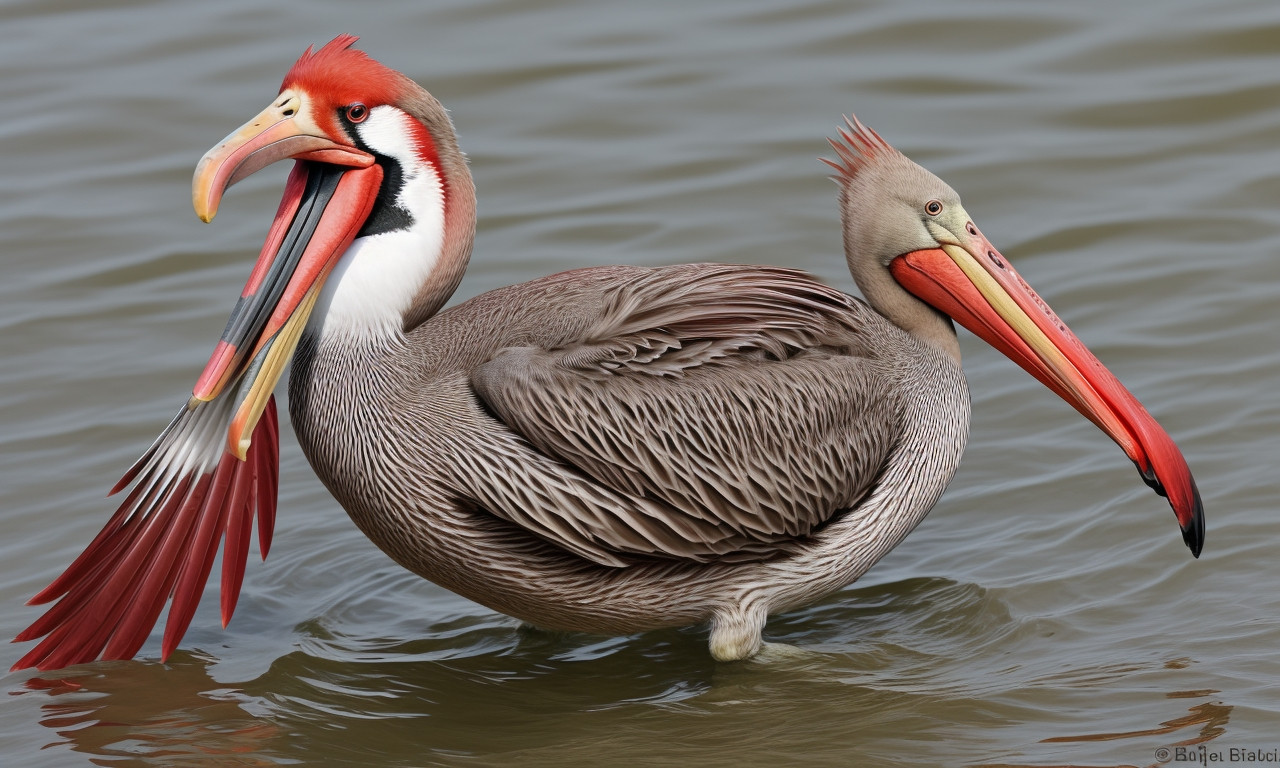
Louisiana’s state bird, the Brown Pelican, holds a cherished place in the heart of this Southern state. This elegant bird, an emblem of resilience and grace, is easily identifiable by its large bill, expansive wingspan, and striking brown and white plumage. Brown Pelicans are often seen gliding effortlessly over the Gulf of Mexico, their keen eyes scanning the waters for fish. They are known for their dramatic dives from great heights to catch their prey, a behavior that is both mesmerizing and vital for their survival.
Interestingly, the Northern Cardinal, another beloved bird in Louisiana, often shares its habitat with the Brown Pelican, though their behaviors and physical characteristics differ greatly. While the Brown Pelican is more commonly associated with coastal environments, the Northern Cardinal is frequently found in woodlands, gardens, and shrublands across the state. The male Northern Cardinal, with its vibrant red plumage, provides a striking contrast to the more subdued hues of the Brown Pelican.
Both these birds contribute to the rich avian diversity of Louisiana. Birdwatchers delight in observing the Brown Pelican’s majestic presence along the coast, while the Northern Cardinal brings a splash of color to inland habitats. Each bird, in its unique way, exemplifies the natural beauty and ecological significance of Louisiana’s wildlife.
Blue Jay
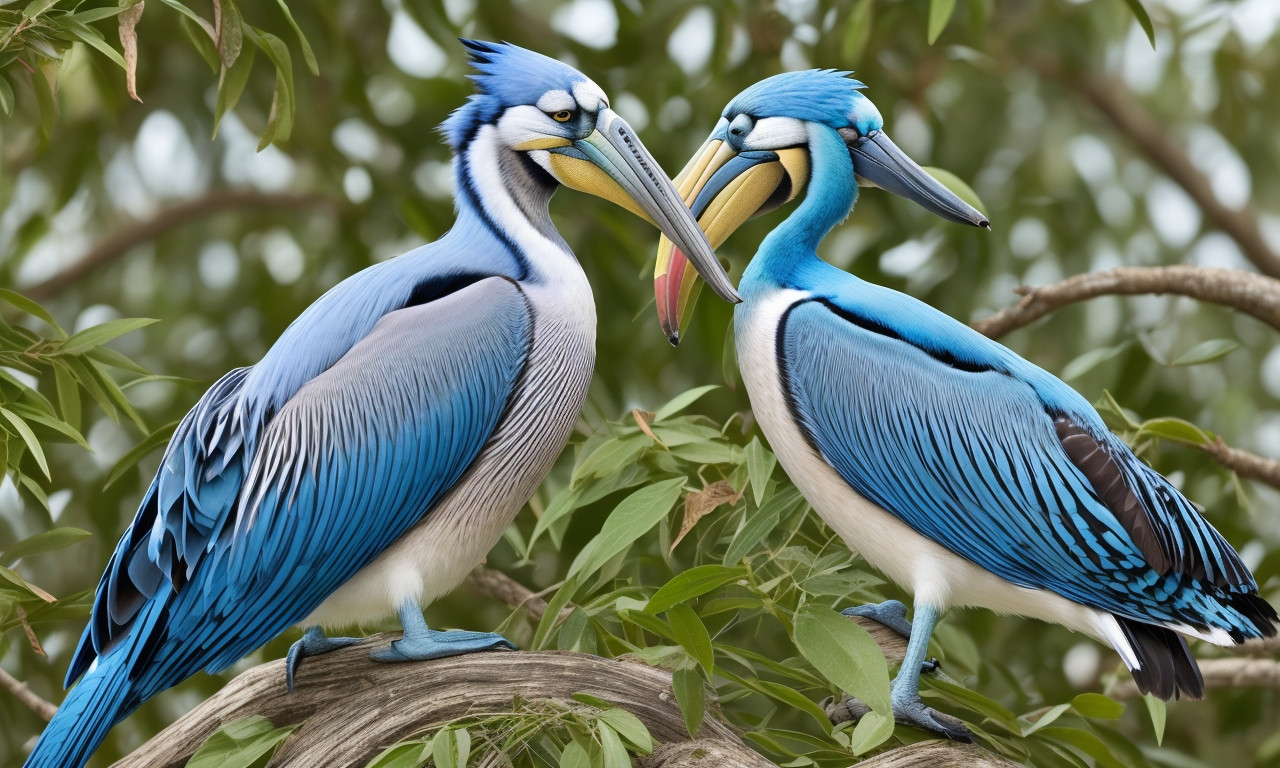
The Louisiana State Bird, the Brown Pelican, stands as a symbol of grace and resilience. It is distinguished by its large body, long bill, and expansive wingspan. Native to the coastal regions, the Brown Pelican primarily feeds by diving into waters to scoop up fish in its expansive bill. Despite facing near extinction due to pesticide use in the mid-20th century, this robust bird has made a remarkable recovery, becoming a source of state pride.
While the Brown Pelican steals most of the avian spotlight in Louisiana, it’s interesting to note the variety in the state’s bird population. Among other notable birds, the Blue Jay adds a splash of color and energy to Louisiana’s vibrant ecosystem. Blue Jays are easily recognized by their bright blue feathers and striking black-and-white markings. Though more commonly associated with the eastern United States, their presence in Louisiana offers birdwatchers an exciting contrast to the coastal Brown Pelican.
Understanding the importance of both the Brown Pelican and the Blue Jay within Louisiana’s diverse bird community helps highlight the ecological richness the state offers. From the resilient Brown Pelican soaring above coastal waters to the melodious Blue Jay darting through forested landscapes, each bird plays a vital role in contributing to the state’s natural heritage.
Northern Mockingbird
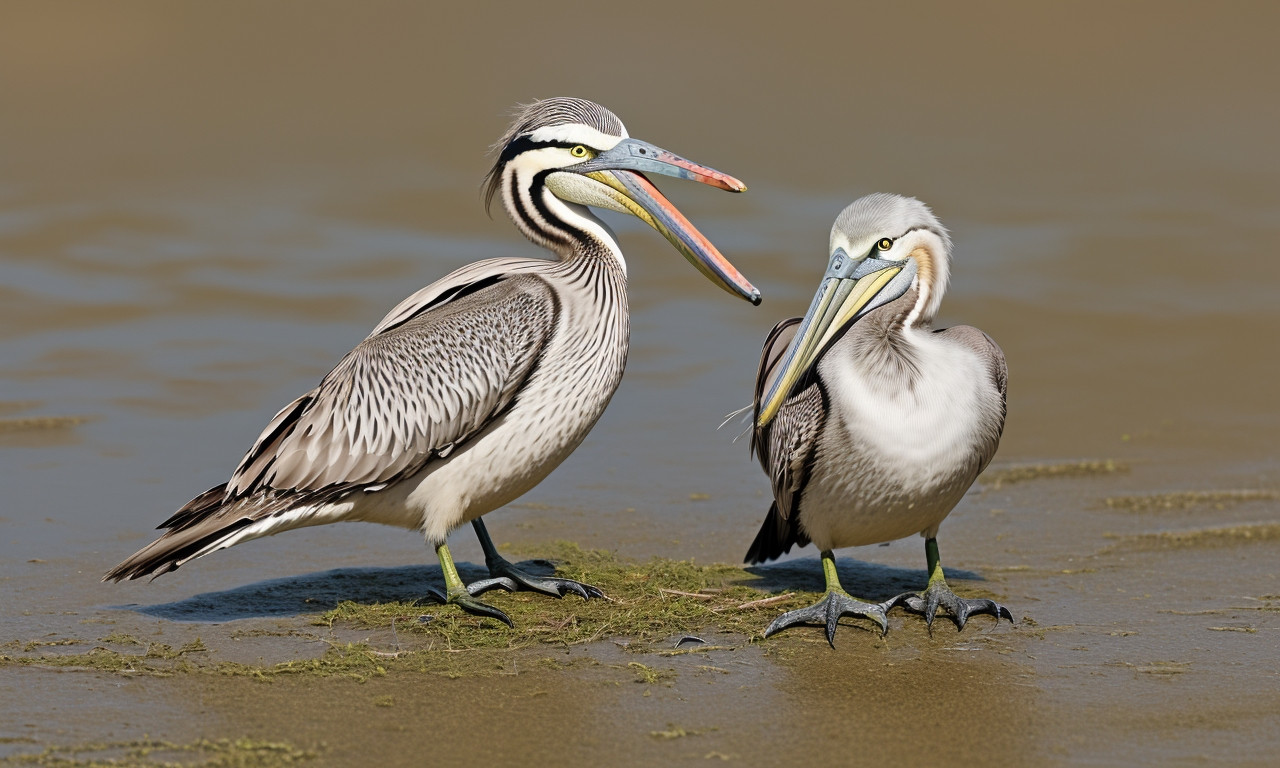
The Brown Pelican, Louisiana’s state bird, holds a rich history steeped in cultural significance and natural splendor. Known for its striking appearance, the Brown Pelican features a distinctive bill and a sizable throat pouch, used for catching fish. Typically gracing the coastal waters and estuaries, this bird’s graceful plunge-dives are a common spectacle.
Louisiana has long celebrated the Brown Pelican, symbolizing resilience and recovery, particularly during the efforts to rejuvenate its population post-extinction threats. The bird’s presence in the state is a testament to ongoing conservation successes, intertwining its story with Louisiana’s vibrant ecosystem.
In the same breath, the Northern Mockingbird, often seen flitting through Louisiana, adds to the avian diversity of the region. While not the main subject, this adaptable bird, known for its mimicking song, shares habitats with the Brown Pelican, creating a dynamic birdwatching experience. The Northern Mockingbird’s melodious presence enhances the environment where the Brown Pelican thrives, illustrating biodiversity.
Identification of the Brown Pelican is straightforward: look for its stout body, long bill, and expansive wingspan. A closer observation reveals a vibrant, colored pouch during breeding season. As Louisianans cherish the Brown Pelican, the Northern Mockingbird stands as a harmonious counterpart, enriching the state’s avifauna tapestry.
Carolina Wren
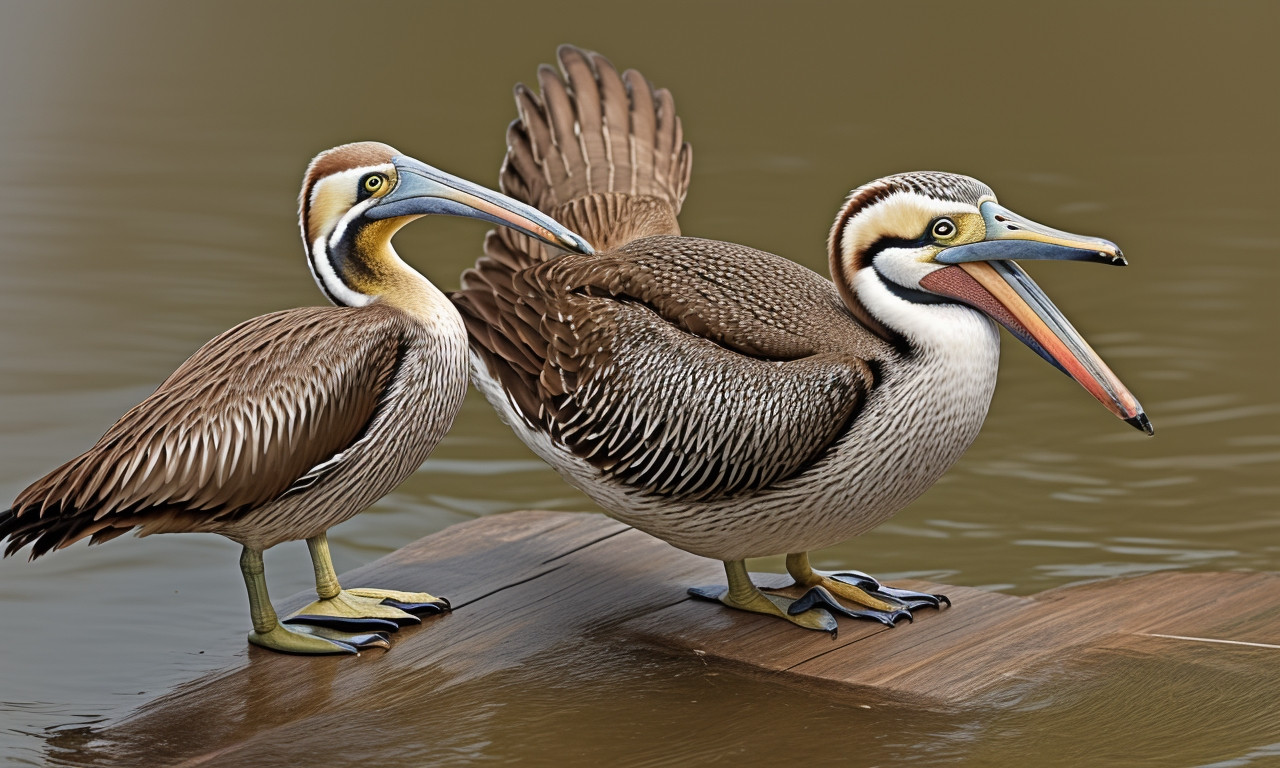
The Louisiana State Bird, the Brown Pelican, boasts a rich history and easily identifiable features. This majestic bird is a symbol of resilience and recovery, having bounced back from near extinction in significant parts of its range due to pesticide exposure and habitat loss. Brown Pelicans are particularly notable for their distinctive long beak and expandable throat pouch, which they use for catching fish. They are large seabirds with a wingspan of up to 9 feet, graceful in their flight, often gliding low over the water.
In adopting the Brown Pelican as its state bird, Louisiana showcases its deep affiliation with coastal wildlife and emphasizes the importance of conservation. These pelican populations are mostly found along the Gulf coastline, often seen diving dramatically into the water to capture their prey.
Interestingly, while exploring Louisiana’s diverse avian life, one might encounter the Carolina Wren, a small songbird with a powerful voice and equally rich history. Although vastly different in size and habits from the Brown Pelican, the Carolina Wren also highlights the ecological diversity present in Louisiana. Observing these birds together provides a broad picture of the state’s wildlife, blending the robust beauty of the Brown Pelican with the charming presence of the Carolina Wren. This coexistence underscores the vibrant tapestry of Louisiana’s natural heritage.
Carolina Chickadee

The Louisiana State Bird, the Brown Pelican, holds a profound historical and ecological significance. Recognized for its distinctive appearance, the Brown Pelican features a robust body, long bill, and expansive wingspan, making it easy to identify. In flight, these pelicans often skim over the waves in precise formations, showcasing their elegance. Historically, the Brown Pelican faced near extinction in the mid-20th century due to pesticide use, which led to significant conservation efforts that have since restored its populations.
Contrasting the Brown Pelican, the Carolina Chickadee, though not the state bird, also enriches Louisiana’s avian landscape. While the pelican commands attention with its size and coastal presence, the Carolina Chickadee draws birdwatchers with its small, agile, and equally fascinating demeanor. Found mainly in woodlands, the chickadee’s signature call adds a lively melody to Louisiana’s diverse bird chorus.
Understanding the habitat, behaviors, and conservation stories of Louisiana’s birds, like the Brown Pelican and even the Carolina Chickadee, highlights the state’s rich avian heritage. The presence of these birds in Louisiana underscores the importance of protecting natural habitats to ensure both species continue to thrive, offering invaluable insights into the region’s ecological complexities.
American Crow
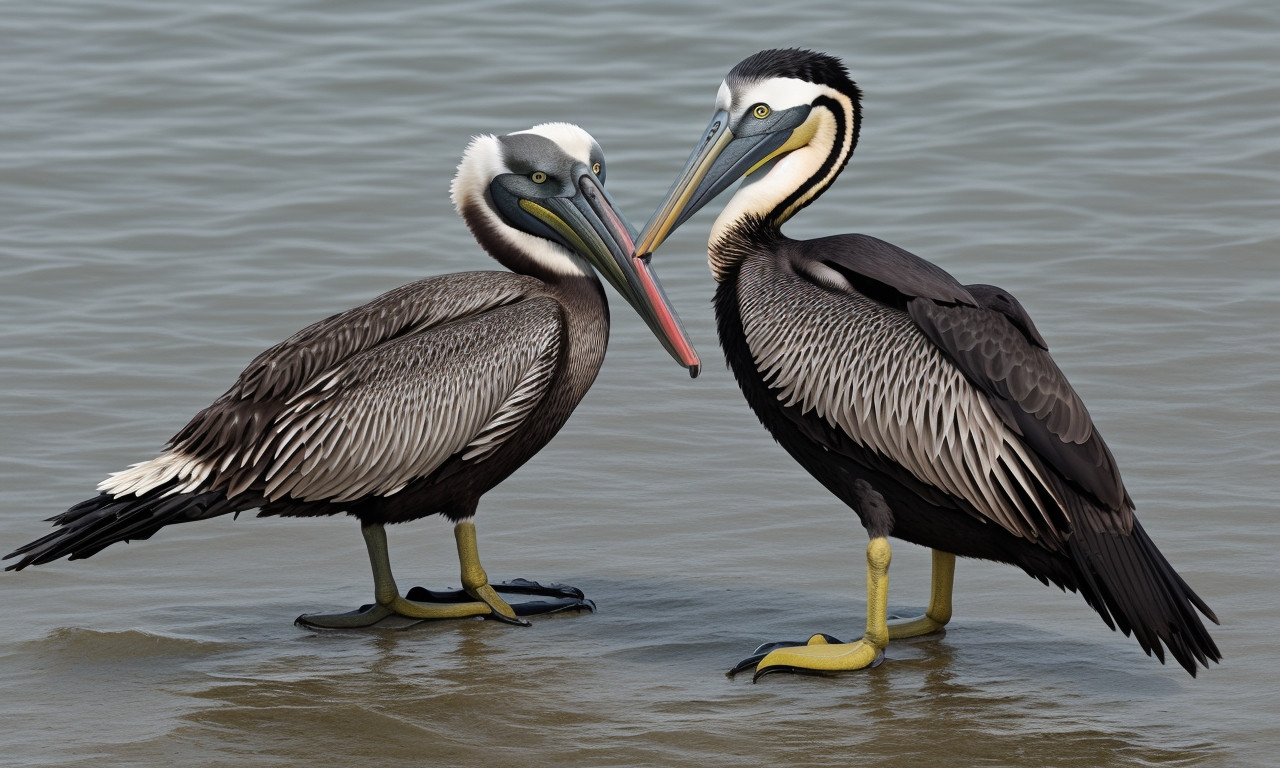
The Louisiana State Bird, the Brown Pelican, is a stunning symbol of resilience and grace. It holds a unique place in the region’s rich history and offers fascinating opportunities for bird enthusiasts to learn about its distinctive characteristics. Despite sharing the habitat with other species like the American Crow, the Brown Pelican remains a standout due to its impressive size, striking plumage, and distinctive fishing techniques.
Brown Pelicans boast an expansive wingspan, often reaching up to 7 feet, which aids in their effortless gliding over the coastal waters. Their brown and white feathers provide effective camouflage among the coastal terrain. Unlike the American Crow, which is easily identified by its jet-black feathers and intelligent behavior, the Brown Pelican’s unique traits include a sizable bill with a gular pouch used for catching fish.
Historically, devastating pesticide usage nearly drove the Brown Pelican to extinction. However, dedicated conservation efforts have successfully rebounded their population. Observers can distinguish them from other waterfowl and local birds, including the American Crow, by their unmistakable large bodies, long bills, and signature plunging dives into the water.
In Louisiana, these majestic birds symbolize not just the natural beauty, but also the triumph of concerted conservation initiatives. For anyone interested in the avian life of Louisiana, understanding the Brown Pelican’s characteristics and history offers a compelling glimpse into the region’s ecological diversity.
Mourning Dove
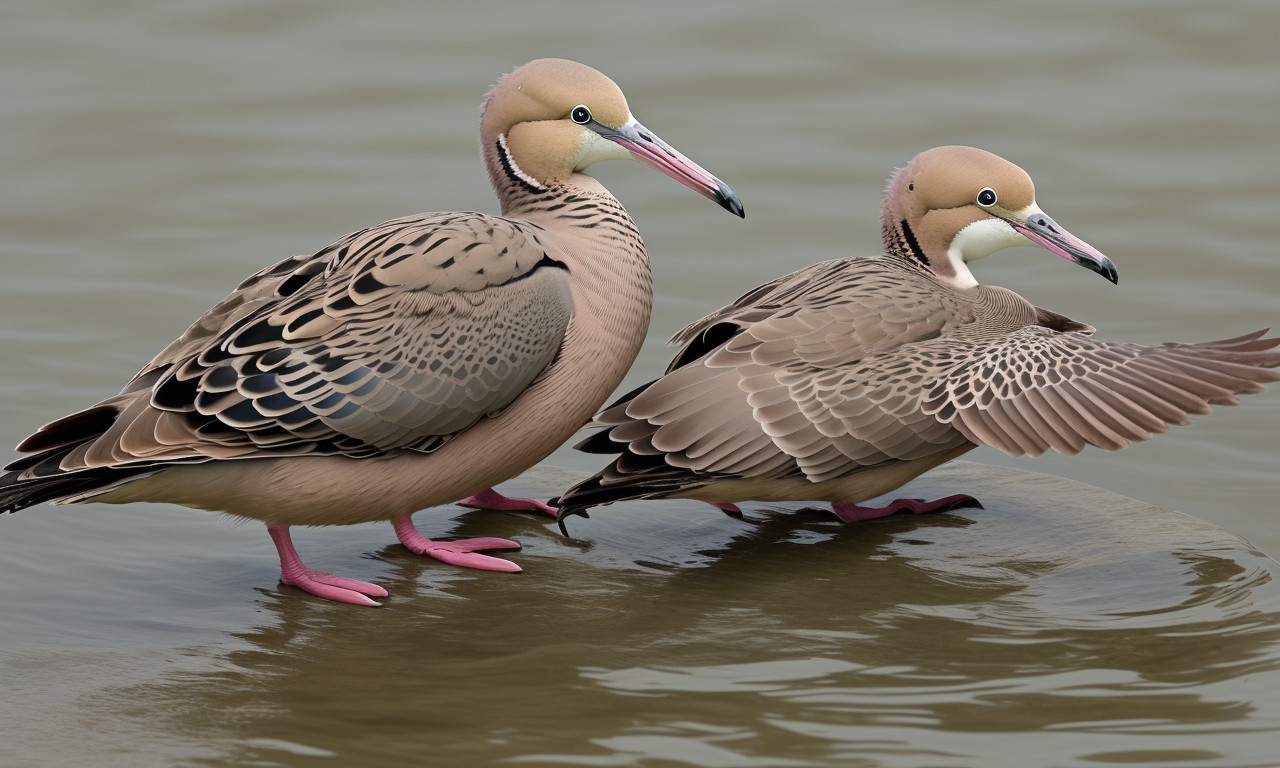
The Louisiana state bird, the Brown Pelican, is a majestic symbol of resilience and beauty, reflecting the rich biodiversity of the region. Known for its distinctive large bill and expansive wingspan, the Brown Pelican is often seen gliding gracefully over the warm Gulf waters or diving dramatically to catch fish. This bird has a storied history intertwined with Louisiana’s culture and conservation efforts, having been removed from the endangered species list thanks to diligent environmental protections.
Identifying a Brown Pelican is straightforward. Adults sport a striking coloration with a white head, brownish-gray body, and dark brown flight feathers. Juveniles are brown all over, gradually adopting the mature plumage. The Brown Pelican is often misidentified with other seabirds, but its unique characteristics, such as the pouch below its bill, set it apart.
While the Brown Pelican is the primary subject of interest, Louisiana also hosts an array of avian life, including the Mourning Dove. These doves add to the state’s rich tapestry of birdlife with their soft, melancholy coos and streamlined bodies. Their presence, alongside the prominent Brown Pelican, enriches Louisiana’s diverse ecosystem and provides ample opportunity for bird watchers and nature enthusiasts to appreciate the state’s natural beauty.
Red-bellied Woodpecker
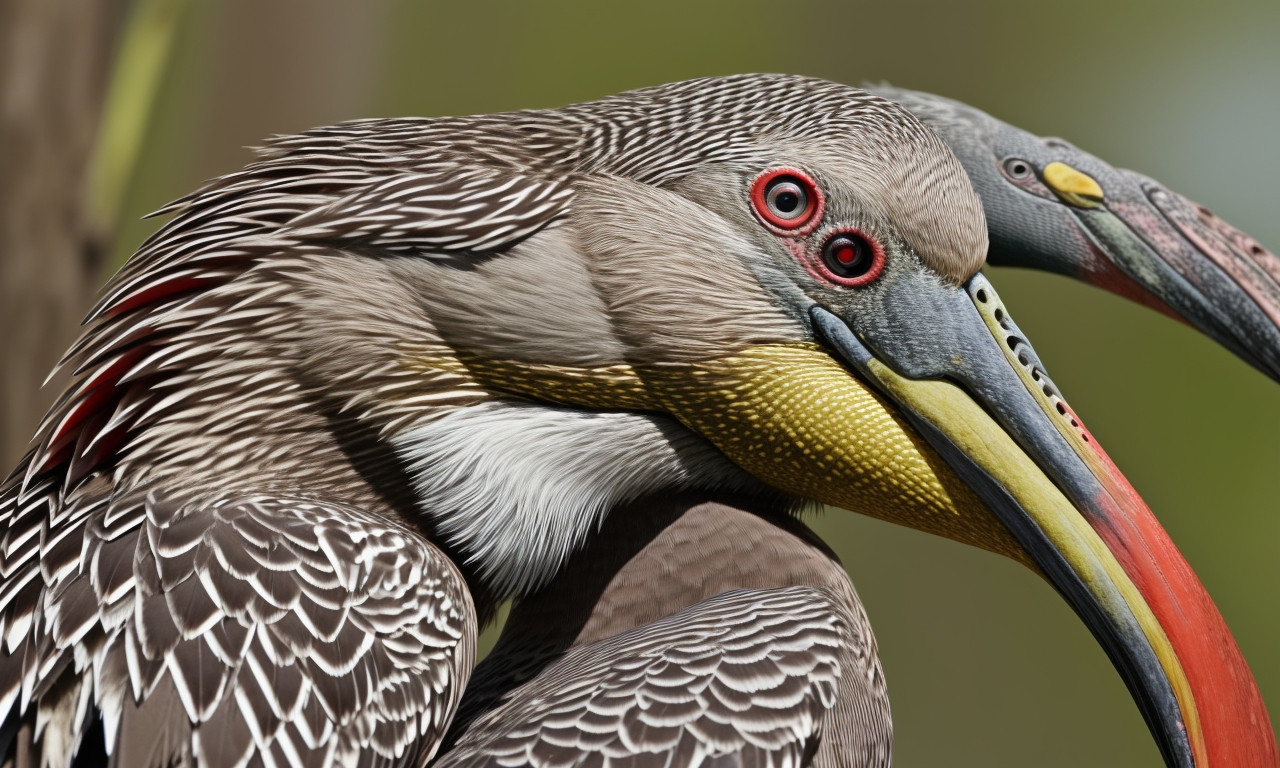
The Brown Pelican is a majestic symbol of Louisiana, renowned for its striking appearance and significant role in the coastal ecosystem. This elegant bird, boasting a wingspan of up to seven feet, is easily identified by its long bill and characteristic throat pouch. The Brown Pelican’s nonchalant glide over the Louisiana waters makes it an eye-catching sight, creating unforgettable memories for bird watchers and casual observers alike.
Historically, the Brown Pelican faced severe population declines due to pesticide poisoning in the mid-20th century. However, through concerted conservation efforts, it staged a remarkable recovery, reinforcing its presence as Louisiana’s state bird. The commitment to preserving such key species underscores the importance of biodiversity and environmental stewardship.
In contrast, another intriguing avian resident of Louisiana is the Red-bellied Woodpecker. Although not as widely celebrated, this bird, with its distinctive zebra-patterned back and subtle reddish belly, showcases the state’s rich avifaunal tapestry. The coexistence of species like the Brown Pelican and the Red-bellied Woodpecker highlights the diverse habitats that Louisiana proudly sustains. Observing these birds within their native environments provides invaluable insights into their behaviors and ecology, fostering a deeper appreciation for Louisiana’s natural heritage.
Great Egret
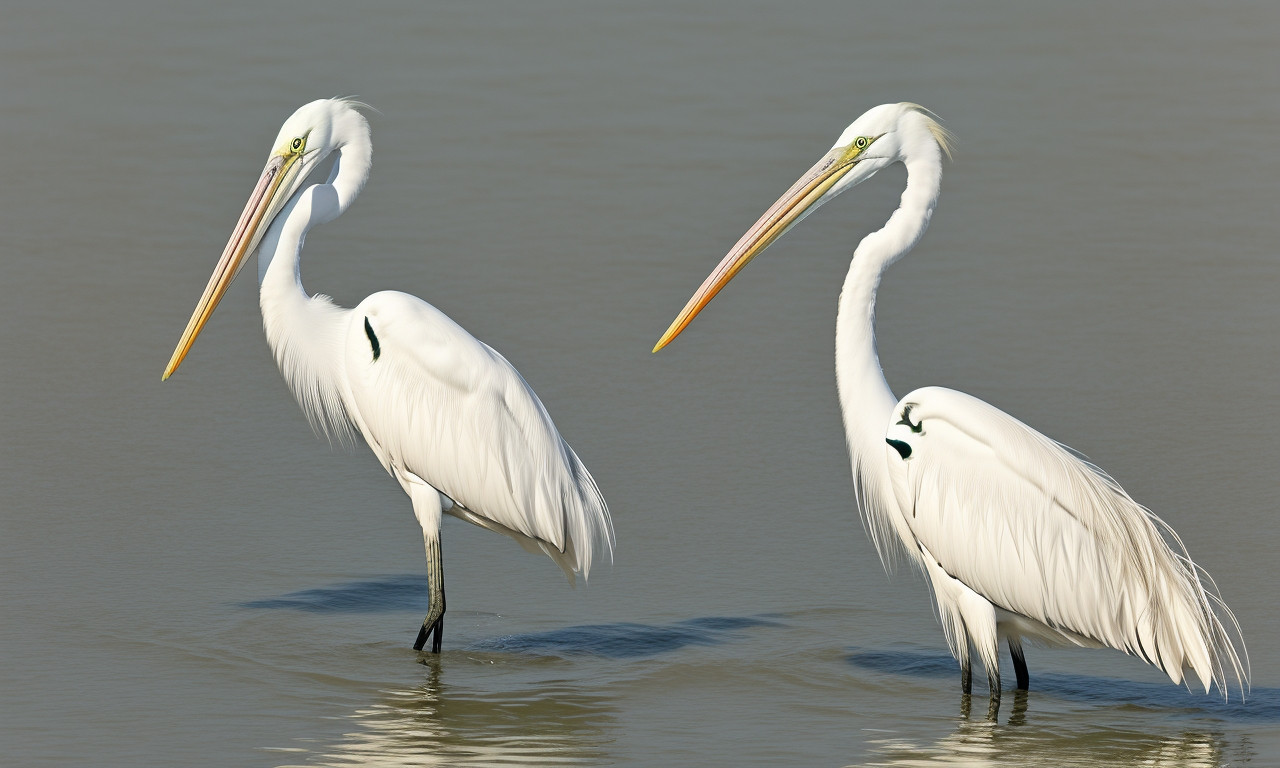
The Louisiana State Bird, the Brown Pelican, is an emblem of resilience and grace, deeply rooted in the region’s cultural and natural history. These magnificent birds, with their large wingspans and distinctive pouched bills, are a common sight along Louisiana’s coastlines and estuaries. The Brown Pelican plays a vital role in the ecosystem, helping to maintain a balance among fish populations.
Interestingly, the wetlands they inhabit are also home to the Great Egret, another splendid bird species. While the Brown Pelican dives spectacularly from the air to catch fish, the Great Egret wades gracefully through shallow waters, showcasing the biodiversity of Louisiana’s habitats.
Identification of the Brown Pelican is straightforward: their brown and grey plumage, coupled with an unmistakable long bill and elongated neck, sets them apart from other birds. This contrasts with the Great Egret’s striking white feathers and slender build. Both birds, however, share the same environment and contribute to the intricate web of life within Louisiana’s wetlands.
The Brown Pelican’s captivating history includes a near-extinction event in the mid-20th century due to pesticide poisoning, followed by remarkable recovery efforts. This narrative of survival and adaptation is a testament to the state’s commitment to preserving its natural heritage, embodying the spirit of conservation alongside other majestic creatures like the Great Egret.
Downy Woodpecker
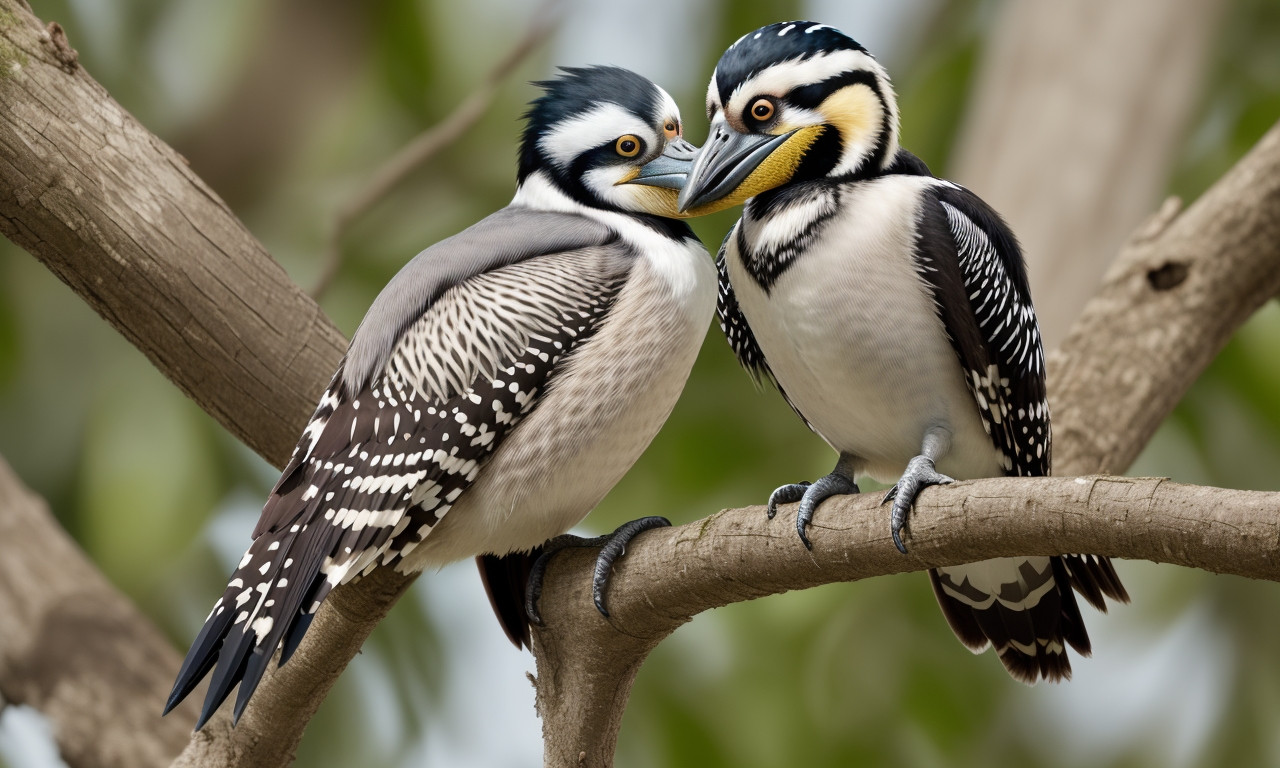
The Brown Pelican, Louisiana’s state bird, holds a prominent place in the state’s history and ecosystem. Revered for its graceful beauty and distinctive features, this bird is easy to identify with its large body, dark brown feathers, and striking white head. They are often seen gliding effortlessly over coastal waters, diving spectacularly for fish, a sight that embodies the resilient spirit of Louisiana.
Interestingly, while the Brown Pelican stands as the symbol of Louisiana, the Downy Woodpecker also plays a crucial role in the state’s biodiversity. Though smaller and often overshadowed by the illustrious pelican, the Downy Woodpecker’s vibrant plumage and rhythmic drumming contribute to the rich tapestry of Louisiana’s avian life.
The pelican’s history in Louisiana is deeply intertwined with local culture and conservation efforts. After being nearly wiped out by pesticide use in the mid-20th century, the Brown Pelican has made a remarkable comeback, symbolizing hope and environmental recovery. This resilience mirrors the Downy Woodpecker’s adaptability, as it thrives in various habitats ranging from dense forests to suburban areas.
In conclusion, the Brown Pelican’s majestic presence and the Downy Woodpecker’s vibrant life both play vital roles in Louisiana’s natural heritage. By learning more about these birds, residents and visitors alike can appreciate the intricate balance of the state’s unique environment.
Frequently Asked Questions
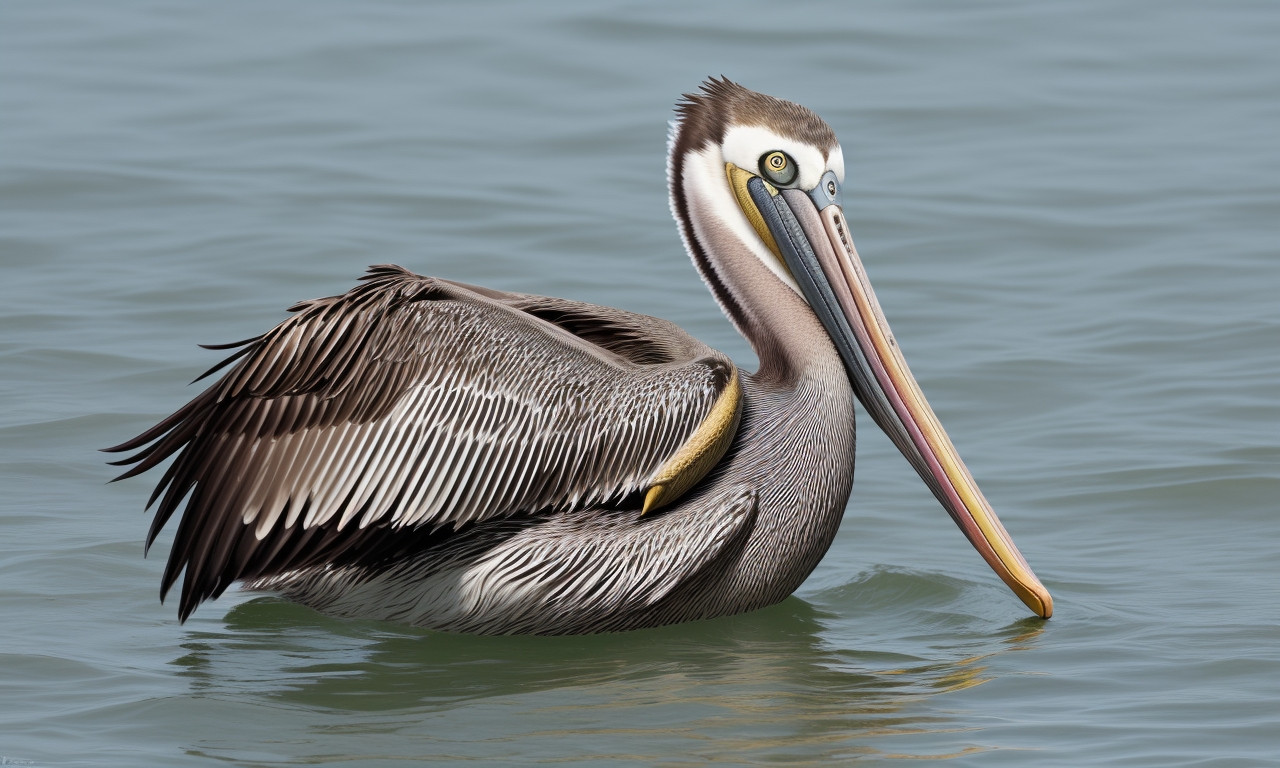
The Louisiana State Bird, the Brown Pelican, holds a distinguished place in the hearts of the state’s residents. With its impressive wingspan and distinctive pouch, this bird is easily identifiable, often seen gliding gracefully over the coastlines and estuaries of Louisiana. Known scientifically as Pelecanus occidentalis, the Brown Pelican is a symbol of resilience and natural beauty, having faced near-extinction in the mid-20th century due to pesticide contamination but making a remarkable recovery thanks to conservation efforts.
Frequently Asked Questions about the Brown Pelican abound, reflective of the curiosity and admiration this bird inspires. One common question is about its diet; primarily, Brown Pelicans dive from great heights to catch fish, making them fascinating to watch. Another frequently asked query pertains to their nesting behaviors: these birds often breed in colonies on barrier islands, using their intricate communication skills to maintain social harmony. Observers also frequently inquire about their migratory patterns; interestingly, while some populations remain in Louisiana year-round, others migrate seasonally along the Gulf Coast.
Understanding the Brown Pelican not only involves identifying its features and behaviors but also appreciating its rich history. This bird was chosen as the state bird of Louisiana in 1966, underscoring its importance to the region’s natural heritage. Through conservation and education, the Brown Pelican continues to thrive, captivating both locals and visitors alike.
What is the state bird of Louisana?
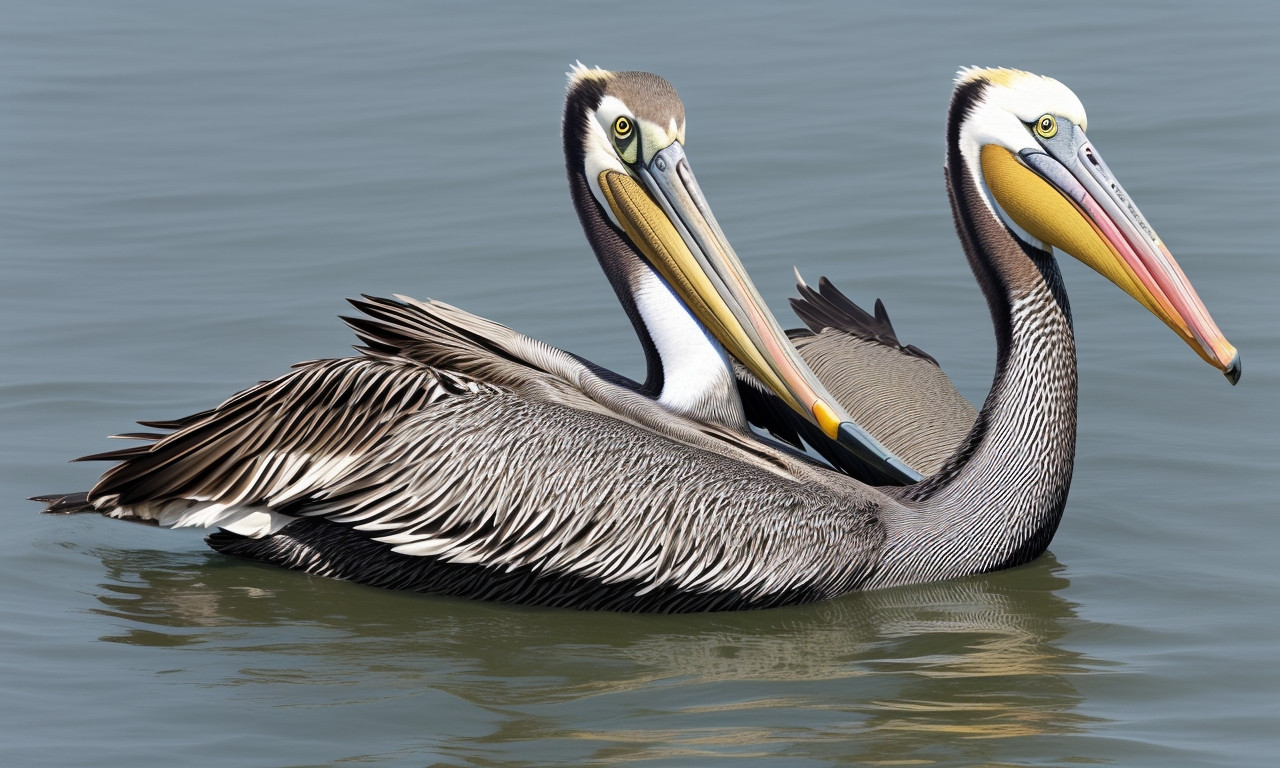
The Brown Pelican, scientifically known as Pelecanus occidentalis, reigns as the official state bird of Louisiana. Distinguished by its striking appearance and fascinating behaviors, this avian species embodies the spirit and cultural heritage of the state. The Brown Pelican is easily recognizable, with its robust body, expansive wingspan, and a notable long bill equipped with a spacious throat pouch. What is the state bird of Louisiana? It is a question often asked, and the answer unequivocally brings pride to the residents.
Once facing near extinction due to pesticide contamination, concerted conservation efforts have revitalized the Brown Pelican population, making it a symbol of resilience and environmental stewardship. Observed frequently along the Gulf Coast, the bird is a skilled fisher, often seen plunging dramatically into waters to scoop up fish. It’s a sight that captures the essence of Louisiana’s vibrant ecosystems.
In addition to its natural beauty, the Brown Pelican holds a significant place in the lore and identity of Louisiana. From its depiction in state emblems to its presence in local art and storytelling, the bird is intertwined with the state’s narrative. Thus, when one wonders, ‘What is the state bird of Louisiana?’ the Brown Pelican stands out not just as an answer, but as a testament to the state’s natural splendor and resilient spirit.
Why is the Brown Pelican the state bird of Louisana?
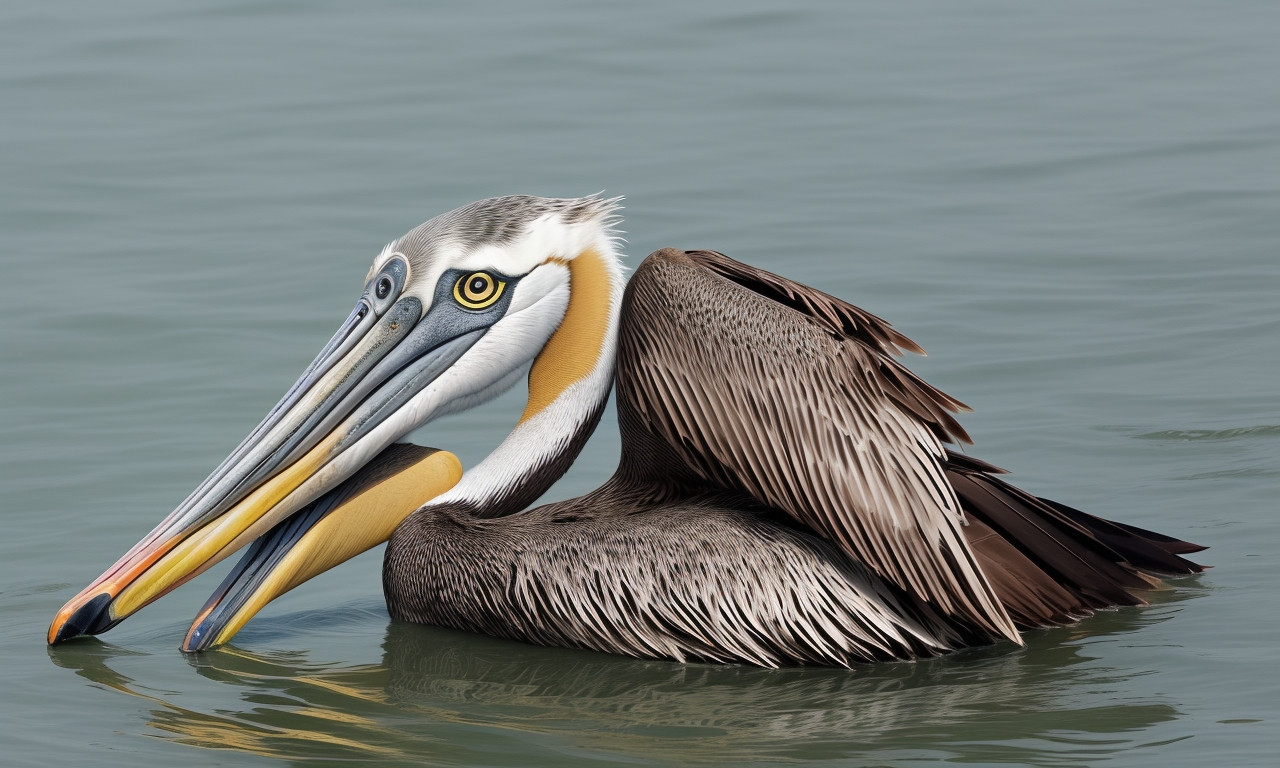
The Brown Pelican, a majestic bird with a rich history, proudly holds the title of Louisiana’s state bird. This unique avian species, characterized by its large bill and gular pouch, thrives along the Gulf Coast, particularly in Louisiana’s diverse wetlands and coastal regions. But why is the Brown Pelican the state bird of Louisiana? The answer lies deeply rooted in both cultural heritage and environmental significance. Historically, the Brown Pelican symbolizes perseverance and resilience, much like the state’s own history of overcoming challenges.
Ecologically, these stunning birds contribute significantly to maintaining the balance of marine ecosystems by feeding on fish, which helps control the population of various marine species. Their presence indicates a healthy ecosystem, essential for Louisiana’s fishing industry—a critical component of the local economy. Moreover, the Brown Pelican’s dramatic recovery from near extinction in the 1960s, due to pesticide pollution, represents the successful conservation efforts that resonate deeply with Louisiana’s commitment to protecting its natural treasures.
Identifying a Brown Pelican involves noting its distinct features: a grayish-brown body, white head with a pale yellow wash, and a long bill with a downward curve. Observing these birds soaring gracefully or plunging into the water for fish is a common, yet awe-inspiring sight, reinforcing their symbolic status in Louisiana. Understanding why the Brown Pelican is the state bird of Louisiana enriches one’s appreciation for its beauty and significance.
When did Louisana choose its state bird?
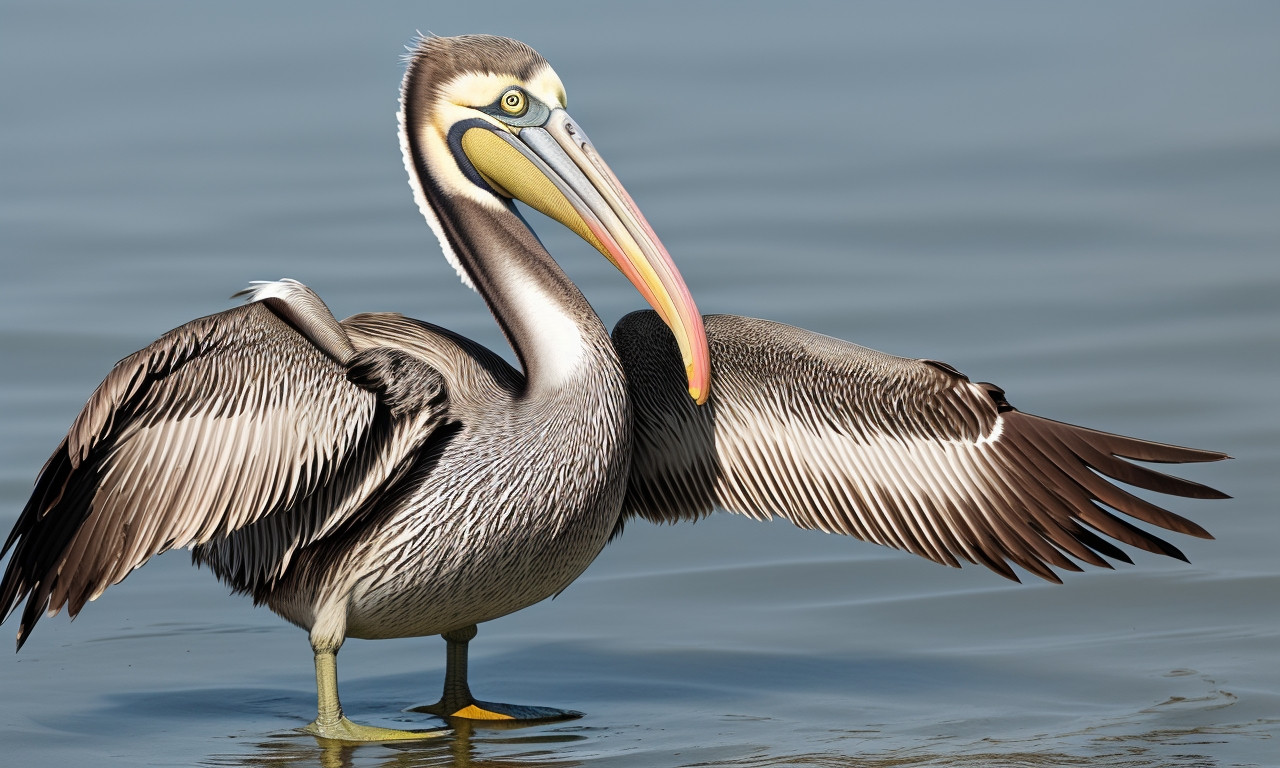
The Louisiana state bird, the Brown Pelican, stands as a symbol of resilience and beauty, with a history deeply intertwined with the state’s identity. When did Louisiana choose its state bird? In 1966, the Brown Pelican was designated as the official state bird, reflecting the cultural and natural heritage of Louisiana. This majestic bird, characterized by its large bill and distinctive throat pouch, is easily identifiable by its predominantly brown and gray plumage, with adults showcasing a white head and neck and a striking yellow patch on their head during the breeding season.
The choice of the Brown Pelican as the state bird celebrates its significant recovery journey. Once facing near extinction due to pesticide pollution, intense conservation efforts have led to the resurgence of its population. Today, the Brown Pelican can often be seen gliding gracefully above the Gulf of Mexico, diving spectacularly into the water to catch fish. Its presence is not just a common sight but a testament to successful wildlife preservation and the rich biodiversity of Louisiana.
Educational programs and bird-watching tours now frequently highlight the Brown Pelican, reinforcing its role as a state symbol, while fostering appreciation and awareness among both residents and visitors.
What other states have the Brown Pelican as their state bird?
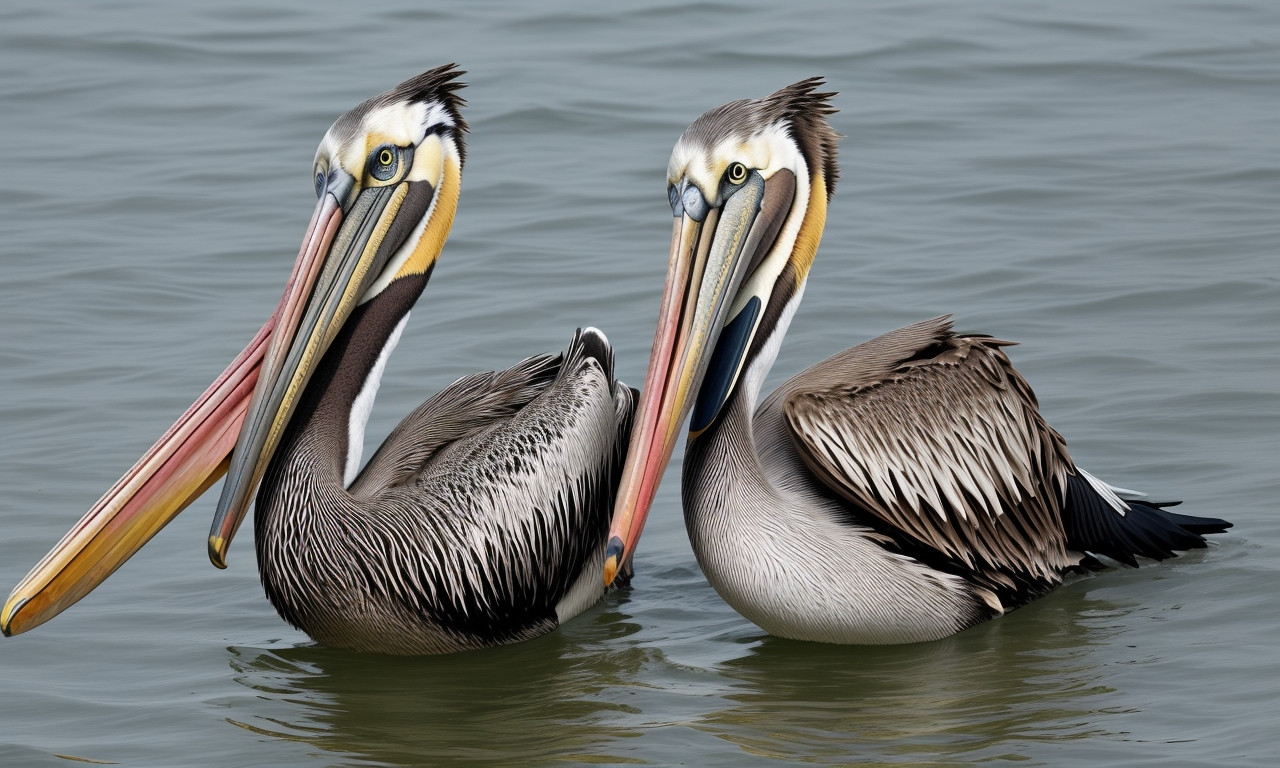
The Brown Pelican holds a special place as Louisiana’s state bird, embodying a rich history and vibrant ecosystem. Recognized for its pouch-like bill and distinctive diving behavior, this bird is an iconic sight along Louisiana’s coastal regions. Its significance extends beyond just state symbolism; the Brown Pelican represents conservation success stories, having rebounded from near extinction in the mid-20th century due to pesticide use.
Interestingly, Louisiana is not the only state to honor the Brown Pelican as its state bird. What other states have the Brown Pelican as their state bird? The answer is only one other—Louisiana shares this accolade uniquely with no other state, underscoring its special connection to the bird. Identification of the Brown Pelican is relatively straightforward due to its unique features: a large body, a substantial wingspan, and an elongated bill with a stretchy pouch for catching fish.
Brown Pelicans are social birds often seen gliding in V-shape formations or resting on coastal piers. Their graceful dives from great heights into coastal waters for fish are a testament to their adept hunting skills. Overall, the Brown Pelican is a deserving emblem for Louisiana, symbolizing resilience, ecological importance, and the beauty of nature preserved for future generations.
What was the previous state bird of Louisana?
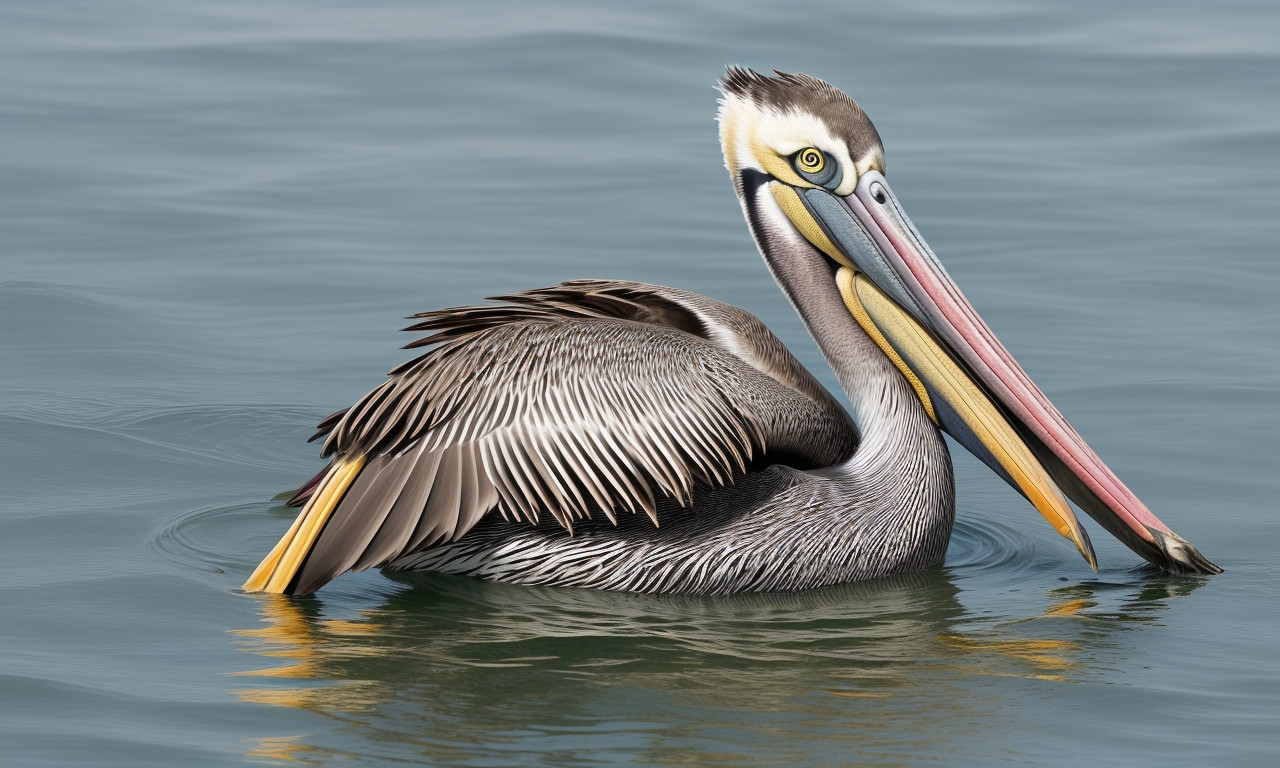
The Brown Pelican, Louisiana’s state bird since 1966, symbolizes resilience and the state’s rich natural heritage. Before this majestic bird took center stage, the state’s official avian representative was the Eastern Brown Pelican. However, many often mistakenly believe cardinals or other native birds held the title. The grandeur of the Brown Pelican, with its expansive wingspan and serene, coastal presence, made it a fitting emblem for Louisiana, resonating deeply with both locals and visitors alike. But what was the previous state bird of Louisiana? The misconception stems from a common mix-up with its coastal counterpart, the Eastern Brown Pelican, contributing to a fascinating, albeit lesser-known, chapter in Louisiana’s history.
Identification of the Brown Pelican is relatively straightforward due to its distinct, sizeable bill and graceful, gliding flight over the Gulf of Mexico. These birds are often seen plunging into the water, showcasing their extraordinary fishing skills. Their preference for warmer coastal waters makes Louisiana an ideal habitat, reinforcing why this bird resonates so profoundly with the state. While people frequently inquire, "What was the previous state bird of Louisiana?" the transition to the Brown Pelican serves as a testament to the state’s evolving connection with its abundant natural resources.

